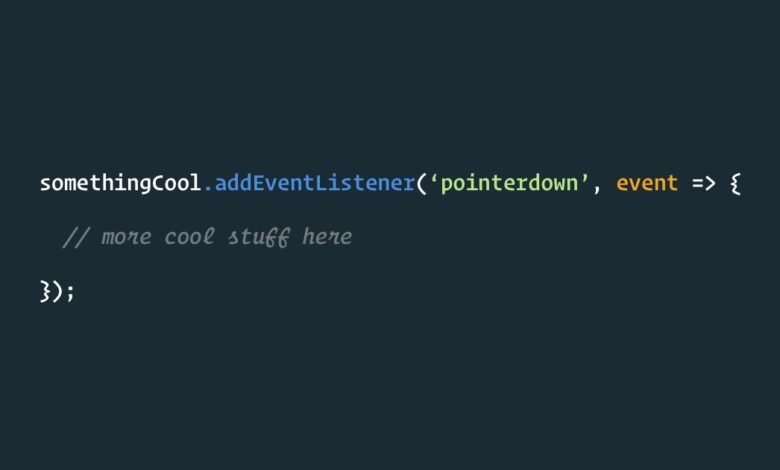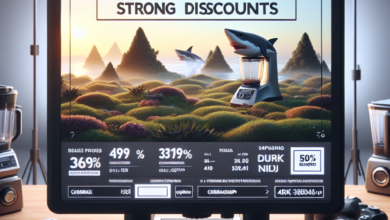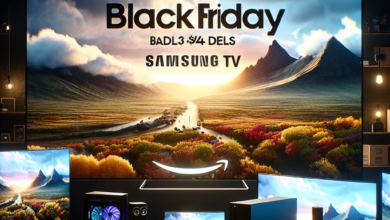How to Use Pointer Events in JavaScript

Welcome to the exciting world of JavaScript! If you’re a web developer or aspiring to become one, you’ve probably heard of the term “pointer events.” In this article, we’ll explore what pointer events are and how you can use them in your JavaScript code to create interactive and engaging web applications. So, let’s dive in!
What are Pointer Events?
Pointer events are a set of JavaScript events that allow you to handle different types of input devices, such as a mouse, touch screen, or pen, in a unified way. These events provide a consistent interface for interacting with various input devices, making it easier to build cross-platform applications that work seamlessly across different devices and browsers.
Supported Browsers
Before we start using pointer events, it’s important to know which browsers support them. As of now, pointer events are supported by all major browsers, including Chrome, Firefox, Safari, and Edge. However, if you need to support older versions of Internet Explorer, you may need to use a polyfill or fallback solution.
Using Pointer Events
Now that we have a basic understanding of pointer events, let’s see how we can use them in our JavaScript code. Here’s a step-by-step guide:
Step 1: Adding Event Listeners
The first step is to add event listeners for the pointer events you want to handle. You can do this by selecting the target element using JavaScript and then attaching event listeners to it. For example, let’s say we want to handle the “pointerdown” event:
const targetElement = document.getElementById('myElement');
targetElement.addEventListener('pointerdown', (event) => {
// Handle the pointerdown event here
});
Step 2: Handling Pointer Events
Once you’ve added the event listeners, you can handle the pointer events inside the event callback function. The event object passed to the callback function contains useful information about the event, such as the type of event, the target element, and the coordinates of the pointer. Here’s an example of handling the “pointerdown” event:
targetElement.addEventListener('pointerdown', (event) => {
console.log('Pointer down!');
console.log('Event type:', event.type);
console.log('Target element:', event.target);
console.log('Pointer coordinates:', event.clientX, event.clientY);
});
Step 3: Handling Different Input Devices
One of the great advantages of pointer events is that they abstract away the differences between different input devices. Whether the user is using a mouse, touch screen, or pen, you can handle the events in a consistent way. For example, let’s say we want to change the background color of an element when the user clicks or taps on it:
targetElement.addEventListener('pointerdown', (event) => {
targetElement.style.backgroundColor = 'blue';
});
Case Study: Building a Drawing App
Now that we know how to use pointer events, let’s explore a real-world example. Imagine you’re building a drawing app where users can draw on a canvas using their mouse or touch screen. By using pointer events, you can handle both types of input devices with ease.
Here’s a simplified code snippet that demonstrates how you can use pointer events to build a drawing app:
const canvas = document.getElementById('canvas');
canvas.addEventListener('pointerdown', (event) => {
// Start drawing
});
canvas.addEventListener('pointermove', (event) => {
// Draw on the canvas
});
canvas.addEventListener('pointerup', (event) => {
// Stop drawing
});
By handling the “pointerdown” event, you can start drawing when the user presses the mouse button or touches the screen. The “pointermove” event allows you to track the movement of the pointer and draw on the canvas accordingly. Finally, the “pointerup” event lets you stop drawing when the user releases the mouse button or lifts their finger.
Summary
Pointer events are a powerful feature of JavaScript that allow you to handle different types of input devices in a unified way. By using pointer events, you can create interactive and engaging web applications that work seamlessly across different devices and browsers. In this article, we explored what pointer events are, how to use them, and even saw a case study of building a drawing app. So, go ahead and start using pointer events in your JavaScript code to take your web development skills to the next level!




